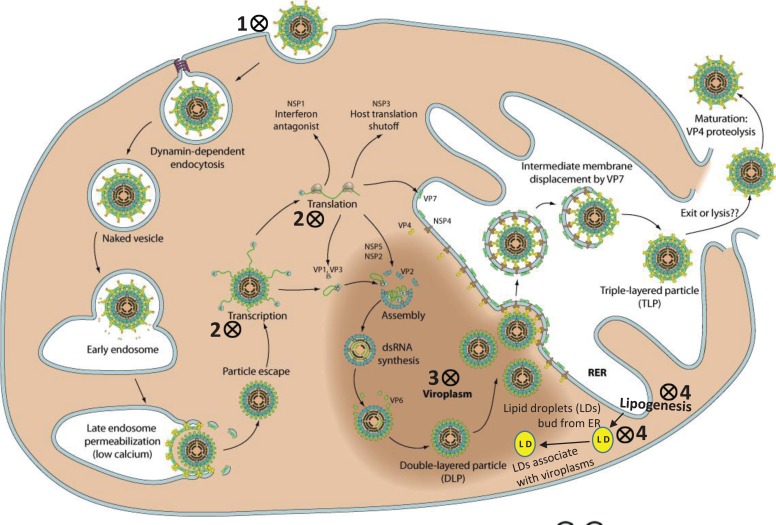Fig. (2).
Replication of rotavirus in host cell. Potential anti-rotaviral targets have been shown with symbol. 1. Blocking virus attachment and entry into host cells: sialylmimetics, lactadherin-derived peptides, neoglycolipid receptor mimetics, and membrane-impermeant thiol/disulfide-blockers. 2. Inhibition of viral RNA and/or protein synthesis: genistein, phosphonoformic acid [foscarnet, PFA], ribavirin and other nucleoside analogs, 3-deazaguanine (3-DG), neomycin and other aminoglycosides, actinomycin D, mycophenolic acid, isoprinosine, viscogens (glycerol), and siRNA. 3. Inhibition of viroplasm formation: nitazoxanide. 4. Suppression of virus replication, and/or virus maturation through inhibition of host cell lipid metabolism pathways and/or homeostasis of lipid droplets (LD): bile acids and farnesoid X receptor (FXR) agonists, 5-(tetradecyloxy)-2-furoic acid (TOFA), triacsin C, isobutylmethylxanthine (IBMX) + isoproterenol, stilbenoids, lovastatin, and cyclooxygenase inhibitors. Lipogenesis and its role in rotavirus replication has been excellently reviewed by Lever and Desselberger, 2016 [169]. This image has been modified with permission from the original source: ViralZone www.expasy.org/viralzone, © SIB Swiss Institute of Bioinformatics [297]. RER, rough endoplasmic reticulum.

